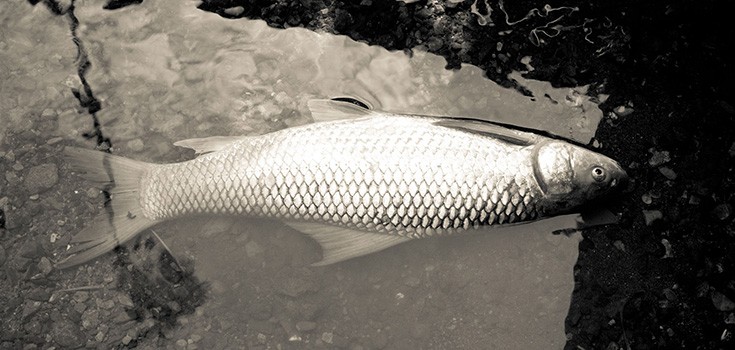Fukushima Fish have 258 Times ‘Safe’ Level of Radiation

The mainstream media is finished with Fukushima, but it seems Fukushima isn’t finished with us. A couple of irradiated fish captured near the inoperative nuclear plant showed 25,800 becquerels of caesium per kilo—258 times the level determined ‘safe’ by the government. The plant ceased operations following a meltdown involving three reactors after the devastating earthquake and tsunami in March of 2011.
Radiation Spike in Fish
Since June, officials have allowed fishing outside a 31-mile radius from the plant while being purportedly stunned by the record radiation levels of the fish. Until the recently captured pair of greenlings, record radiation levels had been at 18,700 becquerels per kilo as found in cherry salmons. The Tokyo Electric Power Company (TEPCO) is intent on capturing more of and researching the fish, their food sources, as well as their habitats to explain the 7,100 becquerels jump.
Of course there is no ‘safe’ level of radiation, and food contaminated with high amounts of radiation can be especially dangerous. Not too long ago, it was found that radioactive food (food contaminated with radiation from Fukushima or others sources), is actually comparable to receiving hundreds of X-rays.
Radiation’s Wide Effects
Radiation cast an even wider net, however, than for fish alone. Butterflies with disfigured eyes, legs, and antennae and stunted wings have caught the eye of scientists and put fear in the hearts of locals. The Sixth Report of Fukushima Prefecture Health Management Survey has declared that 36 percent of Fukushima children have malformed thyroid growths and may develop cancer. Infants and young people are most endangered by radiation’s effects, according to the World Health Organization, because cellular division occurs faster.
Here is an extensive page all about radiation.
Protecting Yourself from Radiation
Fukushima plant operators have already admitted that the Fukushima radiation levels emitted from the disaster exceeds almost two and a half times the initial ‘estimate’ produced by Japanese safety regulators. Researchers have also stated that the amount of radioactive isotope caesium-137 released at the height of the crisis was equivalent to 42% of that from Chernobyl. This is cause for concern, and prompts a serious need for protection.
For now, it’s best to avoid certain varieties of fish from particular areas. Keep in mind that some contaminated tuna have been found off the California coast.
Remember that no dose of radiation is safe and there are variables to consider when protecting yourself from it.
Additional Sources:
